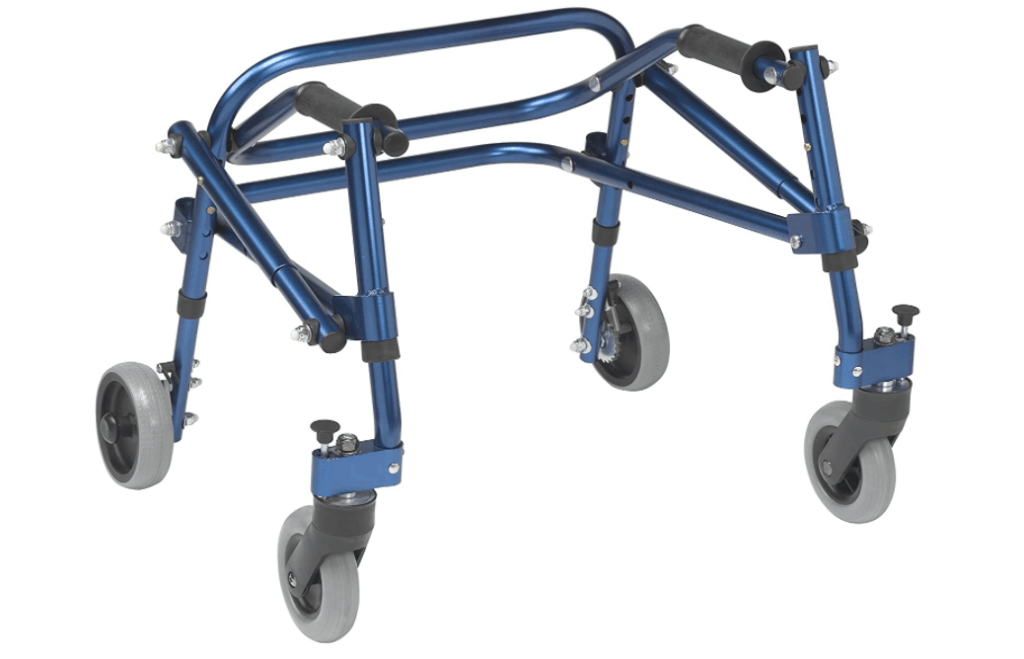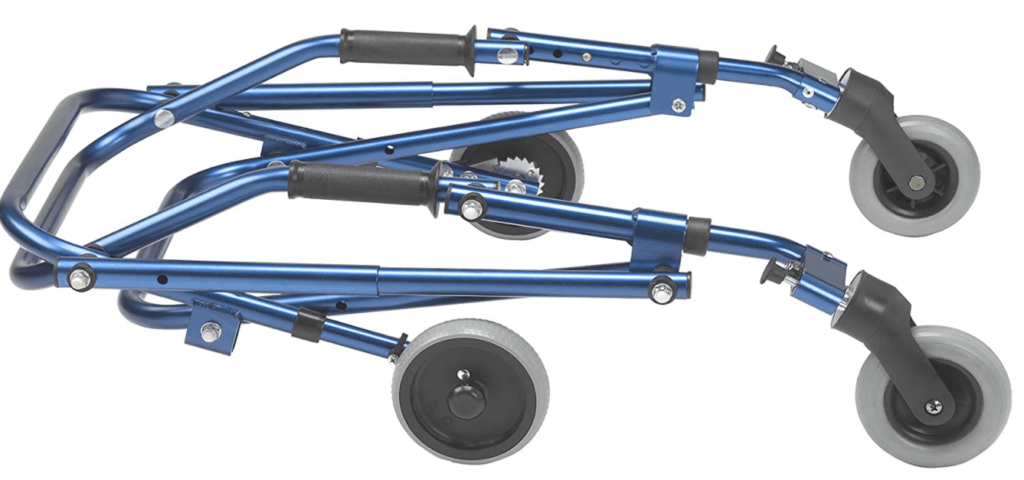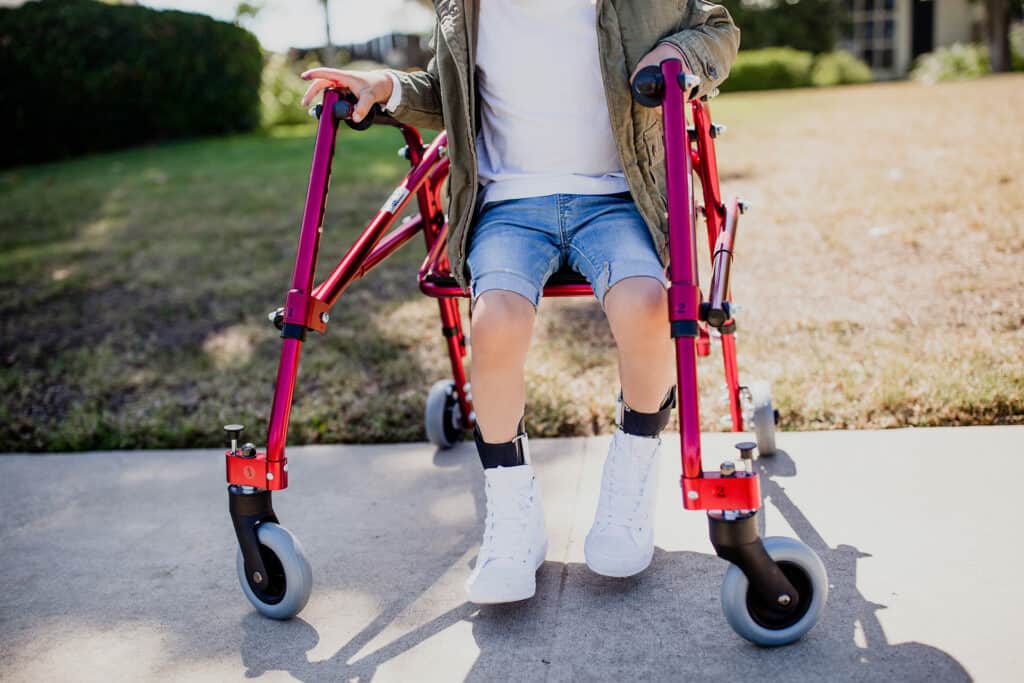Table of Contents
- How to Find the Best Posterior Walker - July 11, 2021
- TracFone vs Verizon: Which is the Best Mobile Service Provider for Me? - May 17, 2020
- Tracfone vs Cricket Compared: Which is Better? - April 29, 2020
Walkers are often associated with the elderly, but they can offer mobility assistance for just about anyone. Children and teens born with disabilities and those suffering from illnesses that affect the limbs can particularly leverage walkers to move around safely.
Today, you will find many walkers in the market, and picking one is not easy. Understand that walkers are very functional, and you must understand the different types of walkers available in which one suits which situation. In this piece, we will look at a common one, the posterior walker, and explain how to pick the best one. Read on;
What is a Walker?
This tool is used by people experiencing difficulties with movement to rehabilitate and give them the support required to move around freely. They are used mainly by older people whose limbs might no longer have the strength to support them, but anyone having an issue with movement can use them.
They are also known as rolling walkers, walking frames, rollators, and gait trainers. Gait trainers are exciting since they represent a category of walkers used at a different stage, specifically for people who can only bear part of their body weight. Rollators are walkers that have wheels.
Be careful when buying one, as some of these names are used interchangeably, and ensure what you get the suitable device.
Anterior vs Posterior Walkers
Multiple factors differentiate walkers, but one common one is the position you take when using them. This is the main difference between an anterior and posterior walker. As the names rightly point out, an anterior walker is ahead of the person using it while a posterior one is behind them.
Away from the structure, picking between these two goes down to the condition of the person who needs the tool and the type of support they require. Anterior walkers are perfect for those who need more support while walking or standing. Their design gives one forward-leaning stability, which helps in stepping and moving forward.
On the other hand, posterior walkers offer better posture alignment control for the patient. They help increase walking speeds and promote an upright posture, thanks to the position of their handles. Posterior walkers require less exertion on the user’s part. They are very popular for young users who need to develop the correct posture and need the accessibility to go about any activity while using the walker.
How to Choose a Posterior Walker?

1.Wheels or No Wheels?
This is the first fundamental design decision you will have to make regarding a posterior walker. One with wheels might appear to be better, but this is not always the case. The choice between the two goes down to the individual preferences and the anticipated use.
A posterior walker without wheels offers more stability. With four legs that can be adjusted to the user’s height, the stationery base is secure. The caveat with this type of walker is that it has to be lifted with every step, which can be good or bad. The user must have sufficient strength to lift the walker frequently, but regardless, the process will always be slower than that of a wheeled walker. The stationery walker will almost certainly get caught up in stuff like the carpet, or the base can sink into the ground when used outside.
A posterior walker with wheels is better for users with an active lifestyle, as long as specific safety measures are employed. They mostly have hand brakes to prevent them from rolling away, and the user should have enough strength to operate them constantly. They should also understand the significance of these brakes to their safety, which can be a challenge for infants and children.
Both types of walkers have their good and bad and take time to assess them before selecting the most suitable.
2.Size is key
Who is going to use the posterior walker? This determines the size you will get. Today, you can come across ones that can be adjusted to serve a wider age range, but others are specifically designed to serve children or adults. The best way to know this is by going through the product description of the options you are looking at.
If you want to buy one for your child, look at how long they will be using it. If they only need it for a few months, it is advisable to buy a pediatric one. However, if they will use it for a long time, buy one that can be adjusted as they grow to avoid buying too many walkers.
3.Material
The material used to make a posterior walker is critical since it affects the weight. A walker should support the one using it without being a burden. Lean towards the walkers with lightweight material that can be easily lifted and moved without straining the user. This enhances control, and usability, specifically for those without wheels where the walker must be raised for every step.
Aside from the main walker structure, consider the handlebar material as well. Your hands need to have a tight grip here and ensure the material suits your preferences.
Many standard walkers have plastic handgrips, which are suitable for grip but can become sweaty. Foam grips are the alternative, as they are gentle on the hands and are not susceptible to becoming sticky when your hands sweat. If the walker comes with multiple custom handles, the better, as this allows you to switch between the two.
4.Portability

If you will be traveling frequently and must carry the walker, look at its portability. You can find foldable walkers that can collapse into a small structure, making it easy to move around with them. If you don’t plan to move around, a standard one with limited portability will do just fine. There are different levels of foldability, and check this as well. From here, pick the device based on the portability level that is convenient for you.
5. Additional Features
A walker is a mobility device, but it doesn’t have to be plain. Some models have additional features that will enhance your experience while using them and make life easier. These features come with an extra price tag, but it’s good to consider and see if they are worth the money or not.
Seats
Posterior rollators can have a seat that lets you rest when you get tired. If you think this feature is essential, look at the sturdiness and positioning of the seat and see if it allows you to sit comfortably. A rollator with a seat can work as a makeshift wheelchair where one sits and gets pushed by another.
Hand brakes
Not all walkers have hand brakes, and ensure that you get one with a pair. Hand brakes are not a luxury as they aid in the safety of the user. In their absence, the walker can be a safety concern to the user and others. Professionals can install hand brakes if you already have a device without one.
Basket
Depending on your situation, you might find it helpful to have some storage space on your posterior walker. This space can be in the form of a basket, bag, or holding area. It helps you to carry stuff that you might not be able to hold in your hands. Luckily, you can buy a basket and attach it to your walker if its structure permits.
Best Practices When Using a Posterior Walker
Talk to a Specialist
Walkers significantly impact your overall body structure, and do not buy one without consulting a specialist. The first step is to see a doctor who will advise whether your problem requires a posterior walker. They will most likely refer you to a mobility device professional for additional examination and recommendations on the best walker to choose. Ensure your doctor gives the green light before buying any specific model.
Mobility professionals work closely with doctors, and they specialize in fitting, personalizing, and even selling these devices. The universal options available in the market might not be suited to your needs, and they will come in and customize one for you. Allow them to examine you and recommend the device that fits properly. Ask them to disclose the full price before buying, as your medical insurance policy can cover this cost.
Use it Correctly

A walker is not a leisure item, and it has to be used correctly to have the desired impact. Understand the correct height advised by the mobility professional and always maintain the proper posture when using it. If you find it hard to adjust it to the appropriate level, have the professional do it and not change the levels.
Get Accessories
To make your life easier, make sure you are appropriately accessorized. Some of the additional features mentioned above will cost you a little more, but they help achieve the larger aim of rehabilitating your body. Your hands will be occupied when using a walker, and try to get a basket or storage space where you can keep your stuff. Some have provisions for adding a cup holder, which ensures you are hydrated throughout the day.
Frequently Asked Questions
Answer: To get the right height, someone should have on a walker, let them stand up straight with their shoes on while their hands are hanging freely. Get the length of their wrist to the floor, and this should be the right height of their walker. Ask them to try it out and adjust it slightly to get the desired posture when using the walker.
Answer: The first group of people is those who suffer from conditions that affect their balance and posture. It could be an accident that requires one to be rehabilitated or a condition like cerebral palsy. This group can be just about anyone, from infants to older people.
Infants are the other category, and you will find multiple pediatric walkers available in the market. Aside from a few mobility issues during childhood, some parents use walkers to train them to walk, especially in their first days when they do not have the balance to do so without support.
Older people are the last group, and the important thing here is understanding whether it is time to get a walker for them. A walker might not be the first step, but a few signs can show that the senior will need one soon. As people age, their core strength and balance deteriorate, and conditions like arthritis affect the joints. The first item they look for is a cane, which is simple to use and easily bought. With time, the cane won’t offer enough support, and here, you will have to get a walker to give them better support.
Answer: This is the other name for a posterior walker. It refers to the types that leave the front user open, usually giving the user support from the back.
Question: What is a reverse walker? Answer: This is the other name for a posterior walker. It refers to the types that leave the front user open, usually giving the user support from the back.
Bottomline
Posterior walkers are one among many types of walkers. These mobility devices help support individuals with balance issues and getting the right one is critical. A wrong posterior walker can’t help the person using it and can even deteriorate the situation subtly. This way take time when assessing the available options and seek the advice of a mobility device professional to make sure that you find the right one.





